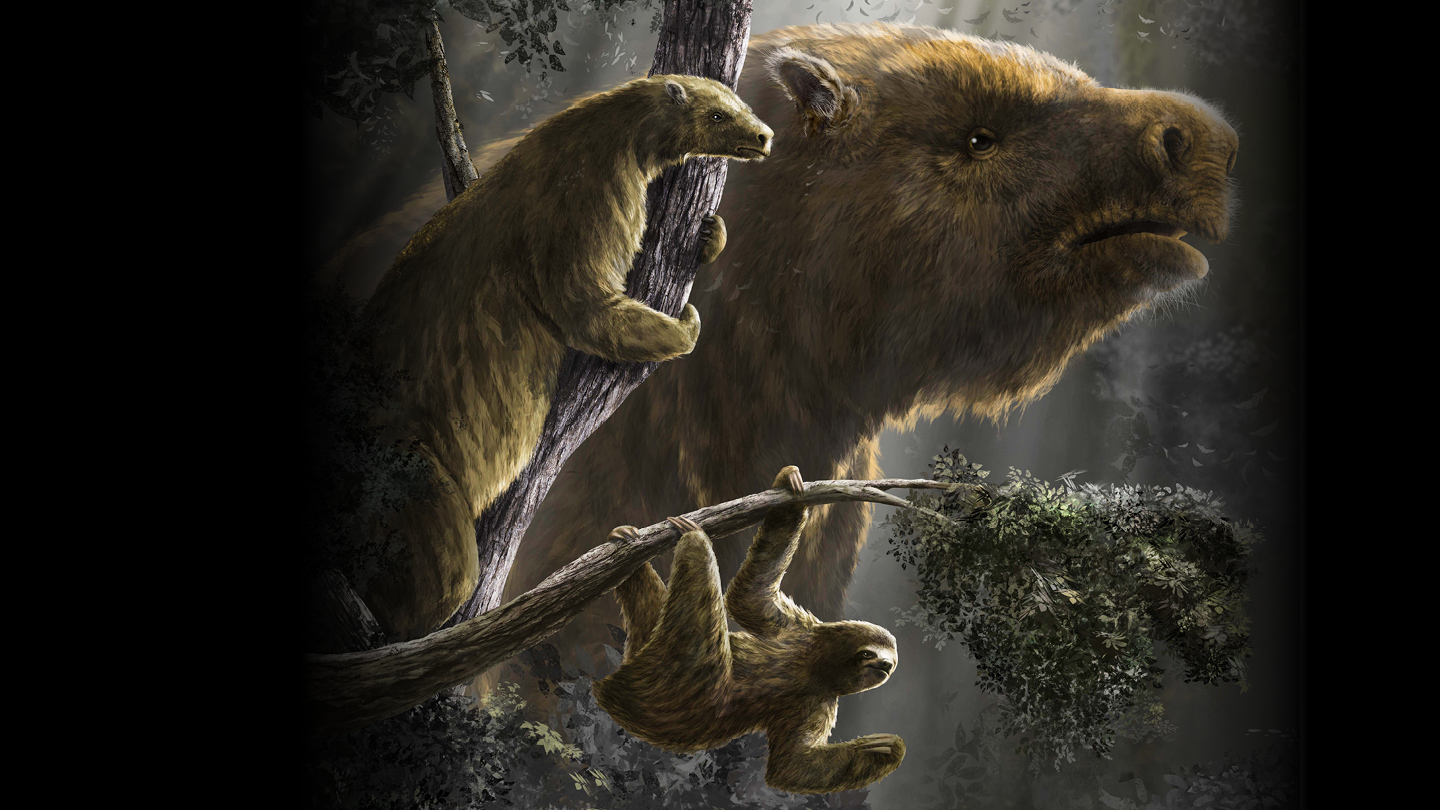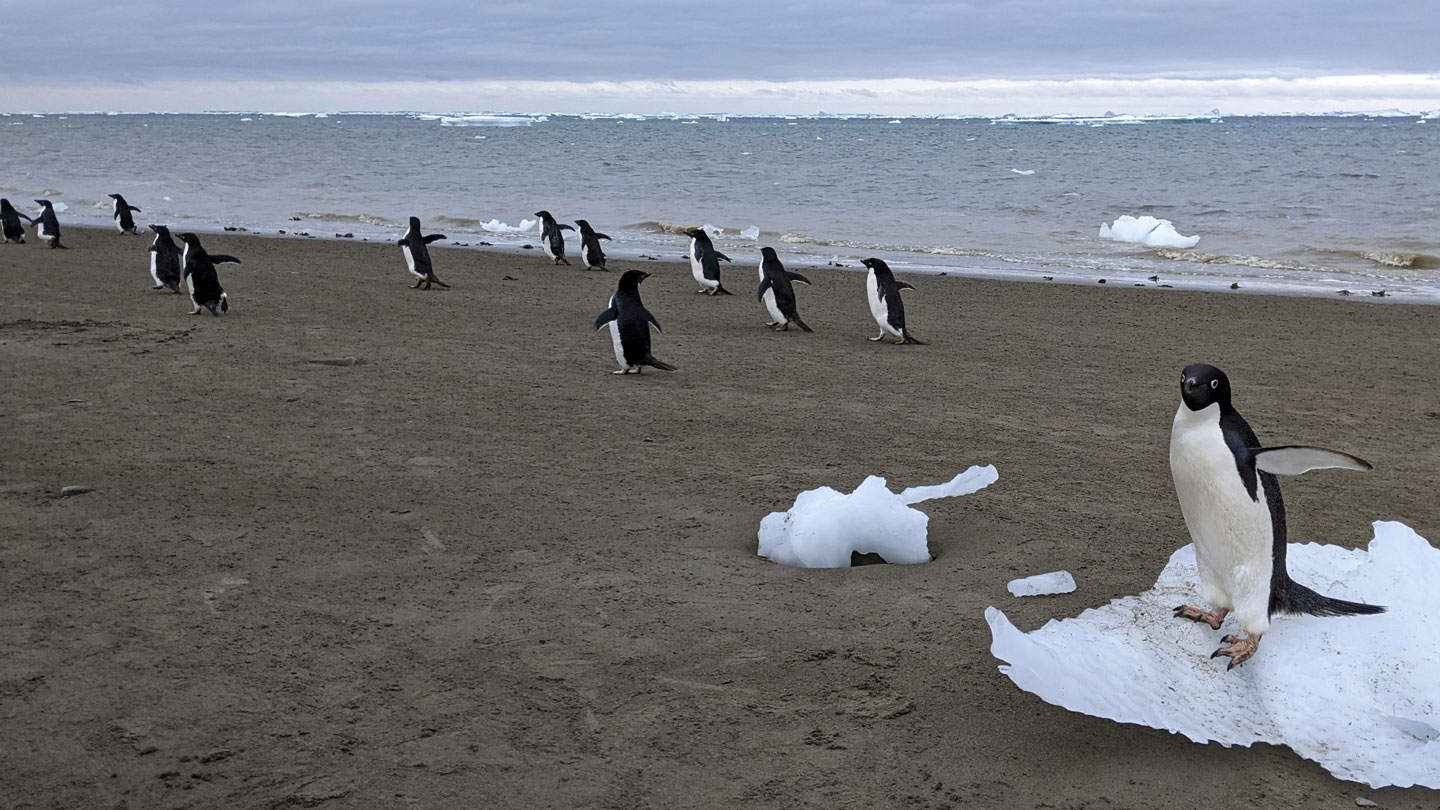The sloth family tree once sported a dizzying array of branches, body sizes and lifestyles, from small and limber tree climbers to lumbering bear-sized landlubbers.
Why sloth body size was once so diverse, while today’s sloths are limited to just two diminutive tree-dwellers, has been a long-standing question. Scientists have proposed that sloths’ body size might be linked to a wide variety of factors: habitat preferences, diets, changes in global temperature, or pressure from large predators or humans.
Now, a new broad analysis of dozens of types of sloths, living and extinct, suggests the most important factor in a sloth’s body size is whether it lived high in the trees or on land, paleontologist Alberto Boscaini of the University of Buenos Aires and colleagues report May 22 in Science.
The researchers studied the shapes of fossils from 49 different lineages of sloths, as well as proteins and DNA in the bones. From these data, the team reconstructed the sloth family tree through time, observing when lineages branched, when they shrank or grew, and when they changed habitat. The researchers also examined how these changes corresponded in time to global climatic changes.

The analysis reveals that, over millions of years of sloth evolution and diversification, different lineages became larger or smaller according to a recurring pattern: habitat preference.
Sloths appeared sometime in the Late Eocene Epoch, around 35 million years ago. The animals evolved largely in isolation on the then-island continent of South America, free from the pressure of the large mammalian predators dominating North America. The group diversified into over 100 dramatically different genera. Some primarily inhabited tropical forests while others lived on open grasslands.
As the climate changed and forested areas waxed and waned over millennia, lineages of sloths sometimes returned to the trees, or resumed their land lifestyle. Tree dwellers again became smaller, while terrestrial forms grew larger.
“A lot of other groups of animals deal with the same pressures, but they didn’t have the extreme body size differences,” says coauthor Rachel Narducci, a vertebrate paleontologist at the Florida Museum of Natural History in Gainesville. “Sloths really provide a rare glimpse at how those different factors correlate with body size.”
The study also suggests that the last common ancestor of all sloths — which hasn’t yet been found in the fossil record — was probably a moderate- to large-sized terrestrial form.
“Given the current evidence, there’s strong support for that,” says Juan Carrillo, a vertebrate paleontologist at the National Museum of Natural History in Paris who was not involved in the new study. “But we have to be a bit careful.” There is no fossil evidence to show what the first sloths looked like, he adds, and what we know of their earliest evolution “is still quite patchy.”
The new study provides a welcome big-picture approach to the evolution of these creatures, says Greg McDonald, a former regional paleontologist with the U.S. Bureau of Land Management from Fort Collins, Colo. “When we look at what comes out in the literature, a lot of it is description of individual finds, or new taxa,” McDonald says. This is “more holistic in terms of looking at a long-term pattern. Often we don’t get a chance to step back and get the big picture of what’s going on.”
As for the demise of most sloths — leaving only a few shy forest-dwellers today — the study suggests that neither habitat preference nor climate was ultimately responsible for their decline. Instead, it was likely humans that drove most sloths to extinction, whether by reducing sloths’ habitat or by directly hunting them. Recent studies have supported the idea that human expansion at this time was responsible for the demise of other large megafauna, such as mammoths.
Ground sloths rapidly went extinct around 15,000 years ago, coinciding with the rapid expansion of humans across the Americas beginning in the Late Pleistocene Epoch. “The larger genera, living more out in the open grasslands, were just easier targets,” Narducci says.
Not all researchers are convinced that humans were the primary driver in the rapid decline of sloths. While there’s abundant evidence of humans hunting mammoths and other megafauna in the Late Pleistocene, McDonald says, there’s relatively little of humans hunting sloths.
However, excavations in the early 2000s at a site in the Pampas region of Argentina did turn up giant ground sloth bones bearing cut marks from stone tools, cutting across the axis of the rib. In 2019, researchers suggested butchering explained the marks.










